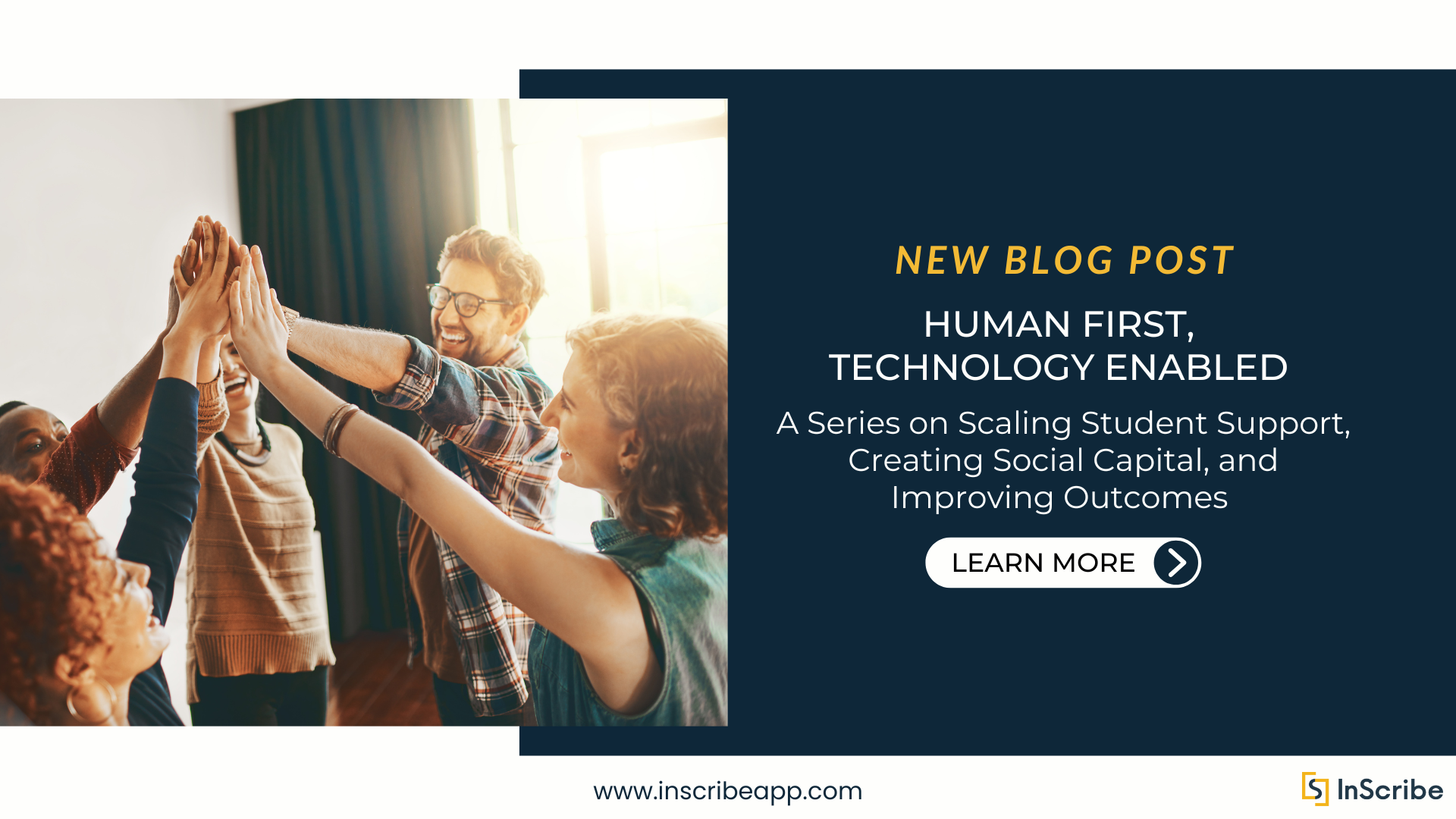Human First, Technology Enabled: A Series on Scaling Student Support, Creating Social Capital and Improving Outcomes
It’s easy to assume that supporting more students means relying more on automation. That’s not the full picture, though—scale doesn’t have to come at the cost of connection. In fact, if we’re doing it right, it should lead to more human connection, not less.
Our team recently attended the UPCEA SOLAR conference and heard this pain point from administrators again and again: institutions are under pressure to serve more students, with fewer resources, while delivering real results. But here’s what we know—the most scalable, effective systems aren’t the most automated. They’re the ones that put people at the center and use technology to amplify what humans do best.
That’s the heart of our new series: Human First, Technology Enabled, where we unpack what it really looks like to build online experiences that empower students not just to complete courses, but to truly feel a sense of belonging and connection to their institutional community and beyond.
Over the next several months, we’ll highlight the people and platforms redefining connection in higher education and challenge the assumptions baked into most online learning models.
Because: in 2025, access isn’t enough.
We’ve spent decades focusing on making education available, scalable, and asynchronous. That’s a huge win. But along the way, we started measuring success and engagement by how many students log in, instead of how many students feel seen.
And the students feel it, too. Ask them what they want more of, and it’s not more content or another chatbot. It’s community. Connection. Mentorship. Peer support. It’s knowing they aren’t alone and that someone has their back, even when they’re 1,000 miles away and learning on their lunch break.
At InScribe, we believe the future of EdTech doesn't rely on automation alone. It's about amplifying the human relationships that support learning.
This series is a reflection of that belief, and it’s a team effort. You’ll hear from InScribe’s co-founders, and other members of the InScribe team. Each of us brings a unique background and decades of experience in online education—many of us began our careers in the infancy of digital learning, and we’ve spent years building tools and communities that support learners globally.
We’ll also feature guest contributors from our partner institutions, who will share what they’ve learned from building community-first models at scale.
Together, we’ll explore questions like:
What does it mean to “design for belonging” in a virtual setting?
How do we center social capital in systems built for scale?
Why is peer-to-peer support often more powerful than a chatbot or help desk?
And how can institutions unlock new levels of engagement by letting students lead?
Each post will pull from real case studies, lived experiences, and the lessons we’ve learned supporting millions of students.
In next week’s post, we’ll unpack one of the most persistent misconceptions in online learning: that students choose to be alone. What we’ve seen, and what the data shows, is something very different.
Our goal for this series is to breakdown and share data and information that gives you insight to help students succeed and meet them exactly where they’re at.
But most of all, this is a conversation. We hope you’ll join us.

